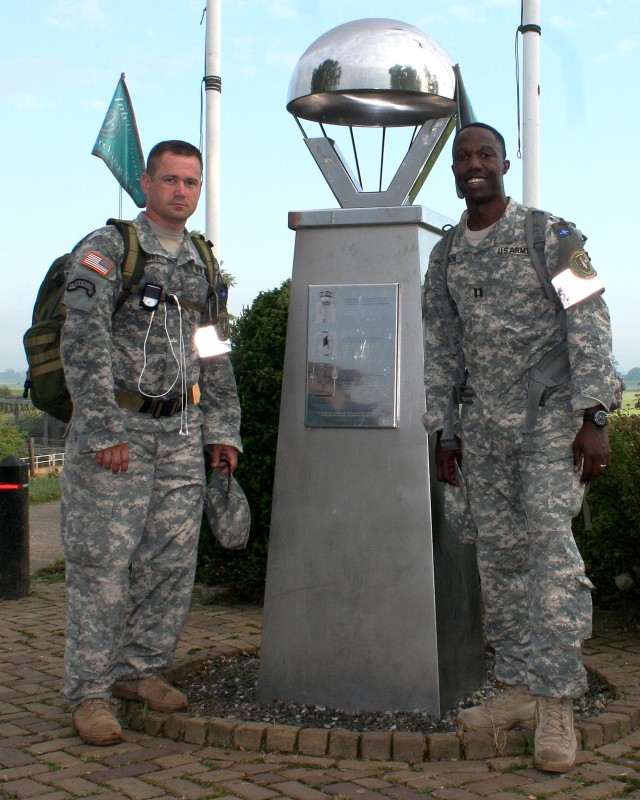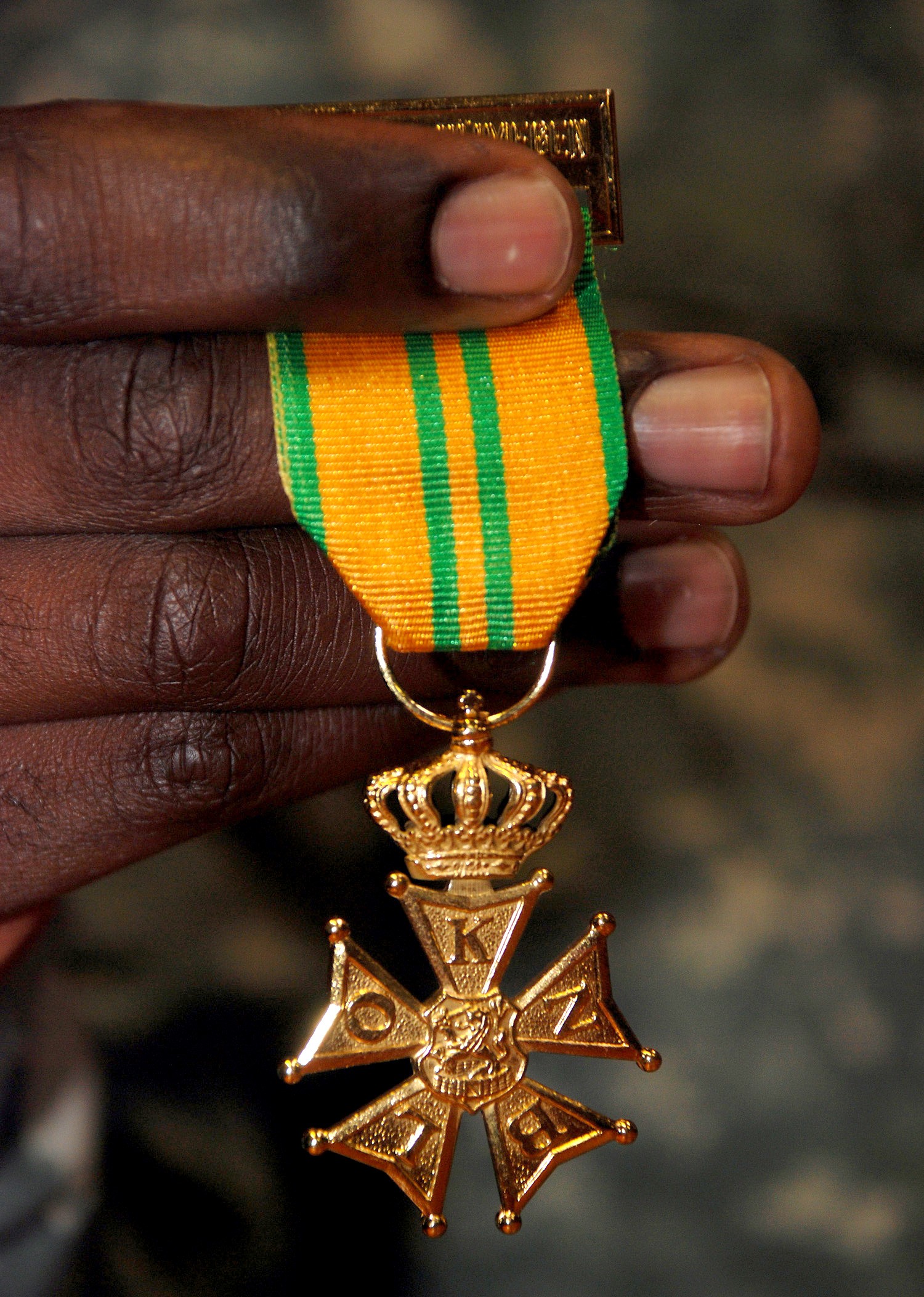BRUSSELS, Belgium - Capt. Brian Sansom took a few days off in late July but instead of lying on a beach or visiting one of Europe's scenic sites he spent four days with 40,000 friends in Nijmegen, Netherlands.
Sansom, who works in the U.S. Army Garrison Brussels Directorate of Plans, Training, Mobilization and Security, completed the four-day, 160 kilometer, Nijmegen March from July 20-23. He also completed the march last year.
Officially known as the 94th Four Day Marches Nijmegen, the event draws individuals and teams from 66 countries around the world. It began in 1909 as a military event and now has more civilian marchers than military.
According to the event's official website, this year 39,933 walkers started the marches on July 20 and 36,504 reached the finish line.
Sansom marched as part of the Allied International Marching Team, sponsored by Allied Joint Force Command, Brunssum, Netherlands.
Three Soldiers from the Benelux also participated in the March: Capt. Eric Kuenke, commander of Headquarters Headquarters Company, USAG Benelux and Sgt. Wayne Karbowski and Spc. Joshua Scott from Schinnen.
Sansom and his fellow military marchers had to walk in their Army Combat Uniform and carry a rucksack with at least 10 kilograms (about 22 pounds) of weight in it.
The military marchers stayed at a military camp outside of Nijmegen where the Dutch Army set up sleeping tents and a mess hall. There were also busses to and from town.
Each day of the march began early, Sansom said.
"We'd depart from the camp about 4:30 a.m.," he said. "Wake-up was usually about 2 a.m."
The marchers followed a 40-kilometer (about 25 mile) route that took them to and from Nijmegen each day. There were rest stops every five to six miles where marchers could eat, rest, seek first aid and refill their water bottles, Sansom said.
"Generally speaking we'd march for about 12 hours each day...to include the stops," he said.
Sansom said he and the other marchers ate as they walked to keep up their energy.
"I carried mini-Snickers bars, that gives you a little sugar kick. I took a lot of nuts, fruit and nut mix, sunflower seeds," he said.
Sansom relied on a Camelback for water; the rest stops provided opportunities to refill it when it got low.
At day's end they'd return to the camp to eat, tend to their feet and body and sleep.
"Usually in bed by 8:30 p.m. and up the next day," Sansom said.
As the days passed and the miles mounted, Sansom felt their impact.
"The first day you're good; the second day you're okay. Your feet might be acting up but the third day is that decision point, that decisive morning when you're getting up again at 2 o'clock knowing that you have another full day of marching 40 kilometers (25 miles). But on that third day, when you finish, you've got one day left; you know you can push it out that last day."
Sansom said that what helped him to keep going was representing the Army and the local people he encountered during the march.
"You're wearing the U.S. Army uniform so you're not just representing yourself you're representing the U.S.," he said. "You don't want to end up falling out because all the people see is the U.S. Army. "We're recognizable out there, they see the flag (on their uniforms) and call out 'US!'" Sansom said.
Sansom said that people line the streets to cheer the marchers.
"There are kids and parents sitting along the sides of the road from the wee hours of the morning waiting for the Soldiers to pass by and give them souvenirs. Everyone brings tons of stickers and old uniform items to give to the kids. You see them on the streets with their souvenirs from past Nijmegen Marches, it's really cool."
Sansom said he was in good physical shape when he finished the march.
"No blisters this year, I had the right equipment. I learned from last year's Nijmegen," he said. "I was surprised myself because I'm walking around normally; last time I did this I was limping for a week waiting for the blisters to heal."
He said his pre-march training prepared his body for the stress of the four-day march.
"I did some ruck marches with weight and for varying distances. The max distance I did by myself was 25 miles," Sansom said. "It helped me get used to carrying the weight. 10 kilograms doesn't seem like a lot but when you add water and other things you might need it gets up there," he said.
Sansom said the other keys to completing the march are to wear proper boots and take care of your feet.
Now that Sansom has completed two Nijmegen marches, would he do it again'
"I definitely want to do it again; there are people in their 50s, 60s and 70s doing it who have been doing it for years," he said.
Sansom said completing the march is about more than getting a medal.
"It's a fulfilling experience that I can't put into words. It's kind of like a love-hate relationship; when you're doing it you wonder why you're doing it or doing it again. But at the end there's this feeling of pride," he said.
"And you get to meet some great people along the way."




Social Sharing